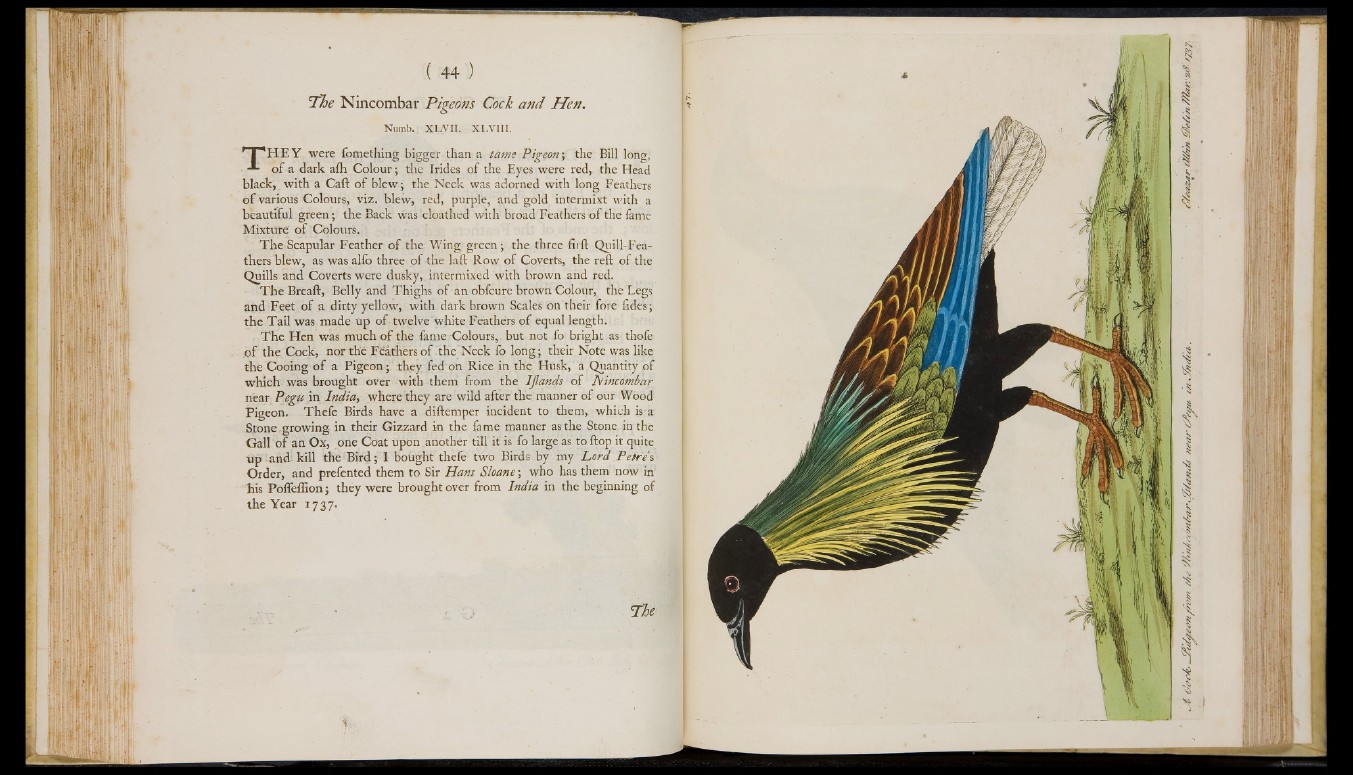
The Nincombar Pigeons Cock and Hen.
Numb,; X L V I I . X L V 1II.
' I H E Y were fotnething bigger than a tame Pigeon; the Bill long,
• -*• o f a dark aih Colour; the Irides of the.Eyes were red, the Head
blacky, with a Caft o f blew; the Neck was adorned with long Feathers
o f various Colours, viz. blew, red, purple, and gold intermixt with a
beautiful green; the Back was cloathed with broad Feathers of the fame
Mixture of Colours.
The Scapular Feather o f the Wing green ; the three firft Quill-Fea-
thers blew, as was alfo three of the laft Row of Coverts, the reft of the
Quills and Coverts were dusky,. intermixed with brown and red.
The Breaft, Belly and Thighs o f an obfcure brown Colour, the Legs
and Feet of a dirty yellow, with dark brown Scales on their fore fides;
the Tail was made up of twelve white Feathers of equal length.
The Hen was much of the fame Colours, but not fo bright as thofe
o f the. Cock, nor the Feathers of the Neck fo long; their Note was like
the Cooing o f a Pigeon; they fed on Rice in the Husk, a Quantity of
which was brought over with them from the Ijlands of H incomb ar
near Pegu in India, where they are wild after the manner of our Wood
Pigeon. Thefe Birds have a diftemper incident to them, which is a
Stone-growing in their Gizzard in the fame manner asthe Stone, in the
Gall of an Ox, one Coat upon another till i f is fo large as to ftop it quite
U p and kill the Bird; I bought thefe two Birds by my Lord Petre's
Order, and prefented them to Sir Ham Sloane; who has them now in
his Pofleffion; they were brought over from India in the beginning of
the Year 1737.